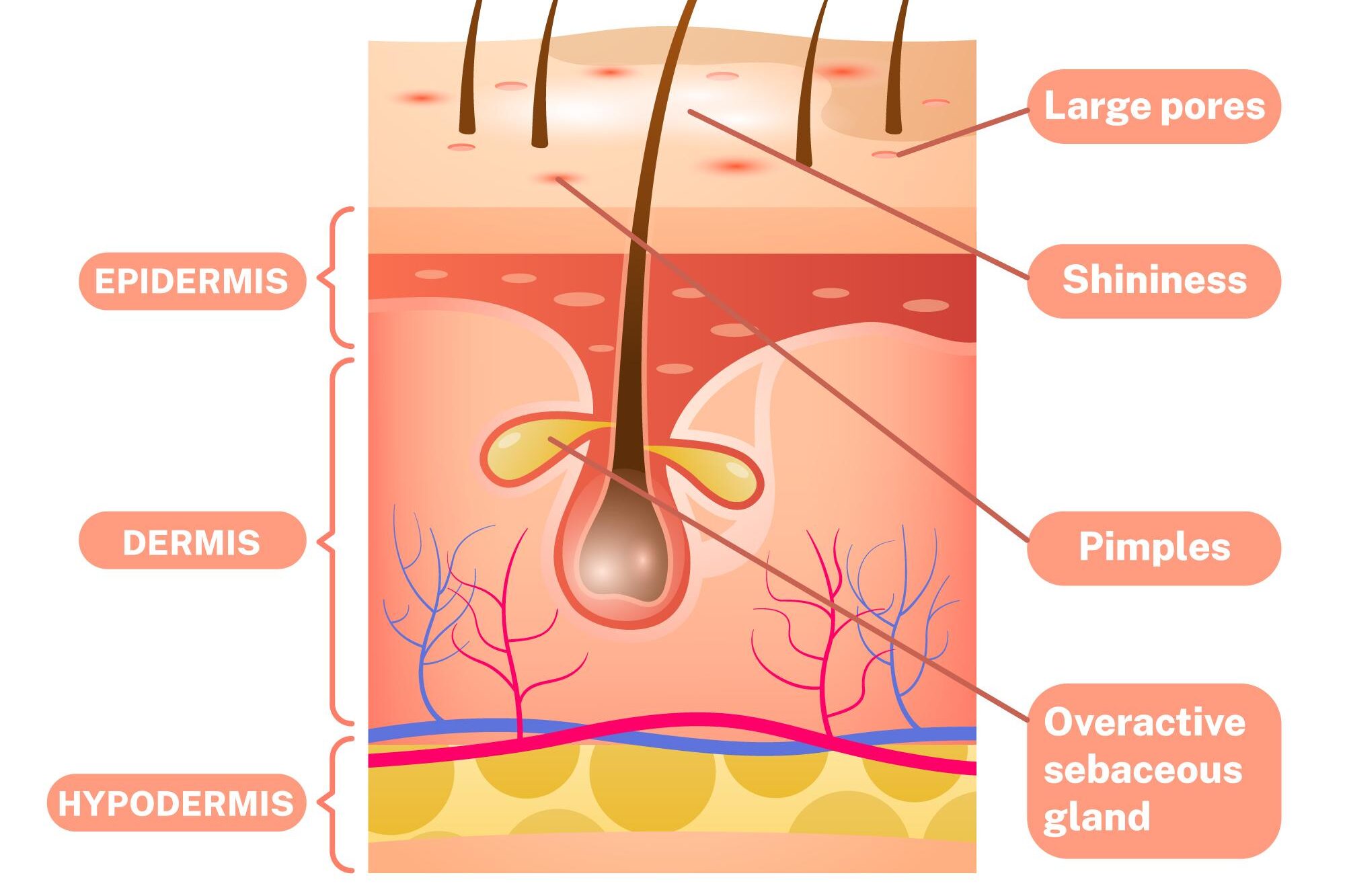The Remarkable Science of Human Skin: Structure, Functions, and Protection
The skin, our body’s largest organ, serves as a remarkable barrier that shields us from the external environment. Comprising three layers—the epidermis, dermis, and hypodermis—human skin is an intricate structure with an array of functions that extend beyond mere physical protection. Let’s delve into the scientifically proven aspects of human skin.

Structure and Composition:
The outermost layer, the epidermis, primarily comprises keratinocytes, which produce the protein keratin responsible for the skin’s strength and waterproofing. Melanocytes, nestled within the epidermis, produce melanin, providing skin its pigment and aiding in protection against harmful UV radiation.
Beneath the epidermis lies the dermis, a dense layer containing collagen, elastin, and nerve endings. Collagen provides structural support, while elastin allows the skin to stretch and recoil. This layer houses blood vessels, sweat glands, sebaceous glands, and hair follicles, contributing to thermoregulation, waste excretion, and hair growth.
The deepest layer, the hypodermis, primarily consists of fat cells that store energy and provide insulation. It also anchors the skin to underlying tissues.

Functions:
- Protection: The skin serves as the first line of defense against pathogens, chemicals, and physical trauma. The acid mantle, created by sebum and sweat, inhibits bacterial growth.
- Thermoregulation: Sweat glands release perspiration to cool the body, while blood vessels in the dermis constrict or dilate to regulate heat loss.
- Sensation: Nerve endings enable the skin to detect touch, temperature, pressure, and pain, allowing us to interact with our surroundings.
- Excretion: Sweat glands eliminate waste products like urea, assisting the kidneys in maintaining a healthy balance of electrolytes and fluids.
- Vitamin D Synthesis: The skin’s exposure to UVB radiation facilitates the conversion of 7-dehydrocholesterol to vitamin D, essential for bone health.
- Immune Response: Langerhans cells in the epidermis recognize pathogens and initiate immune responses.
Skin Aging and Environmental Factors:
As we age, the skin’s structural components, collagen and elastin, degrade, leading to wrinkles, sagging, and decreased elasticity. Environmental factors, like UV radiation and pollution, accelerate this process by generating free radicals that damage cellular DNA and collagen fibers. Practicing sun protection and antioxidant-rich skincare can mitigate these effects.
Conclusion:
Human skin is an intricately designed organ that surpasses its role as a mere protective barrier. Its multi-layered structure and myriad functions contribute to our overall well-being. Understanding the scientific aspects of skin empowers us to make informed choices about skincare, protection, and maintaining its health for years to come.



0 Comments